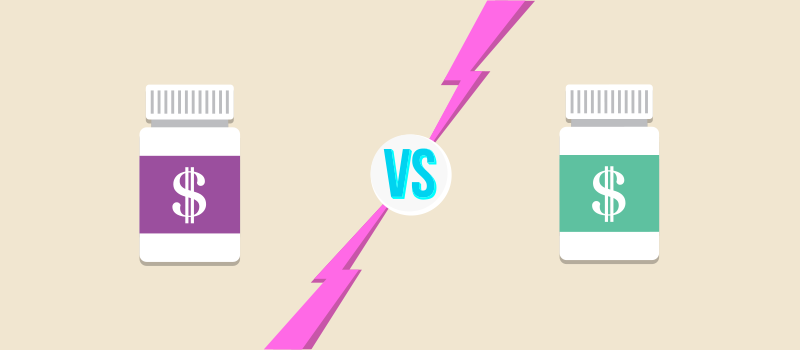What’s the Buzz
The Bee Healthy Blog
Medicare Drug Price Negotiations & What It Means For You

On Tuesday, August 29th, the Centers for Medicare and Medicaid Services announced the first 10 prescription drugs subject to Medicare price negotiations. This monumental announcement is part of the Biden administration’s Inflation Reduction Act, which aims to curb inflation and the Federal Government’s deficit by lowering prescription drug prices for older populations, investing in domestic energy production, and promoting clean, renewable energy.
After two decades, the Federal Government has finally lifted the prohibition of negotiating drug prices for Medicare, a longstanding goal for many policymakers. This milestone should give U.S. seniors a reprieve from costly pharmacy trips and allow more Americans to see lower prescription drug costs and insurance premiums in the future.
What drugs are on the Medicare Drug Price Negotiation list?
The list consists of the following drugs:
- Eliquis: used to prevent blood clotting and reduce the risk of stroke.
- Jardiance: used to lower blood sugar for people with type 2 diabetes.
- Xarelto: used to prevent blood clotting and to reduce the risk of stroke.
- Januvia: used to lower blood sugar for people with type 2 diabetes.
- Farxiga: used to treat type 2 diabetes.
- Entresto: used to treat certain types of heart failure.
- Enbrel: used to treat rheumatoid arthritis.
- Imbruvica: used to treat different types of blood cancers.
- Stelara: used to treat Crohn’s disease.
- Fiasp and NovoLog: insulin for controlling blood sugar and treating Type 1 and Type 2 diabetes.
This list was not chosen at random. These 10 drugs made up the highest spending for Medicare between June 2022 and May 2023 and treat common diseases among Medicare users, such as blood clots, diabetes, heart disease, and chronic kidney disease. For example, Medicare spent $12.6 billion on Eliquis alone in 2021.
Further criteria for choosing these prescriptions required them to have been on the market for at least seven years with no competition, allowing the drug maker enough time to make a substantial profit without competition from generic versions, which typically enter the market after a drug’s 10-year patent expires. While pharmaceutical lobbyists are generally unhappy with this plan, which poses a considerable threat to their business model, this was one of the negotiating compromises.
What Does This Mean for Medicare Patients?
This change in the healthcare industry could make a big difference to Medicare enrollees. However, the biggest winner in this achievement is still the government, which pays the most into Medicare. The Federal Government will save nearly $100 billion by 2031, and those savings are expected to trickle down to Medicare patients. With cheaper drugs, Medicare enrollees could see lower premium costs, cheaper out-of-pocket expenses, and possibly a $2,000 yearly cap per person on prescription drug costs.
While this is a huge step forward after years of patients facing insurmountable prescription costs, the negotiated drug prices would not go into effect until 2026.
What Does This Mean for People With Private Insurance?
For the time being, this announcement directly affects only those on Medicare. However, with more price transparency through Medicare, private insurance companies may have more leverage to negotiate prices for their organizations. Patients outside of Medicare may pressure the industry to lower prices when they see themselves paying significantly more out of pocket for their prescriptions than those on Medicare. This pushback on insurance companies may cause them to comply in order to gain more customers and retain the ones they have.
Why Does This Matter?
It’s no secret that prescription drugs are more expensive in the U.S. than in any other developed country. Today, many people struggle to afford their medications, especially seniors on a fixed income who may take prescriptions that Medicare Part D does not cover.
It’s a relief to see that change is happening despite pushback and even lawsuits from private drug companies who want to stop the implementation of the Medicare price negotiations. Their arguments include concerns over profits, the ability to conduct effective clinical trials, and threats to future product developments. These lobbyists are simply doing their job to protect the pharmaceutical companies’ profits, so this fight from Big Pharma is to be expected. Most importantly, more people will have access to life-saving medications without breaking the bank or draining their savings due to this monumental accomplishment of the Inflation Reduction Act. It may be a slow process that will continue to face backlash, roadblocks, and political input, but this announcement is a step toward a healthcare system and drug industry that benefits more people than ever.
References
- https://www.kff.org/medicare/issue-brief/how-will-the-prescription-drug-provisions-in-the-inflation-reduction-act-affect-medicare-beneficiaries/#:~:text=The%20prohibition%20against%20the%20federal,goal%20for%20many%20Democratic%20policymakers.
- https://www.cbsnews.com/news/medicare-drug-price-negotiation-insulin-eliquis-jardiance-xarelto-novolog-fiasp/
- https://www.cnbc.com/2023/08/30/medicare-drug-price-negotiations-may-have-muted-impact-on-drugmakers.html












SOCIAL